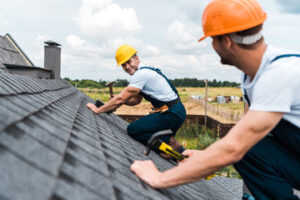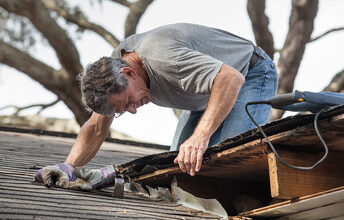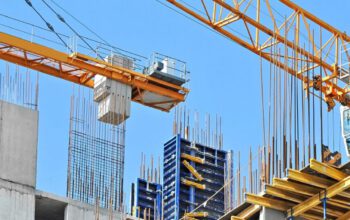While a roof is a roof, there are differences between commercial and residential roofing. These differences are important to note so businesses can choose a high-quality roof to support their operations best. Common types of commercial roofs include asphalt/composition shingles, metal panels, TPO membranes, PVC membranes, and concrete tiles/slabs/blocks. These options are durable and can withstand adverse conditions like UV exposure and strong winds.
 Commercial roofing is a big investment, and it’s important to understand the costs involved to make the best decision for your business. Getting expert advice and quality services when working on a commercial roof is crucial. Otherwise, you could spend more money in the long run due to expensive repairs and the potential for additional damage to interior systems that may occur due to poor maintenance.
Commercial roofing is a big investment, and it’s important to understand the costs involved to make the best decision for your business. Getting expert advice and quality services when working on a commercial roof is crucial. Otherwise, you could spend more money in the long run due to expensive repairs and the potential for additional damage to interior systems that may occur due to poor maintenance.
The cost of a commercial roof can vary greatly depending on the type of material that is used and the size of the building. For example, a metal roof will typically be more costly than an asphalt shingle roof. However, the higher cost of a metal roof can be offset by the energy efficiency and durability that it provides.
Other factors that can affect the cost of a commercial roof include the amount of snow that accumulates on the roof, the structural integrity of the building, and the type of mechanical equipment that is installed on the roof. Regardless of the type of roofing material that is chosen, it is important to budget for the installation costs, as well as any ongoing maintenance and repair expenses.
Choosing the right roofing materials for your commercial building can help protect it from water damage, lower energy bills, and improve its longevity. In addition, a quality commercial roof can protect your valuable inventory and enhance the aesthetics of the building.
One of the most common types of commercial roofing is built-up roofs, or BUR. These are layered roofs that have been in use in the United States for over 100 years. They are sometimes referred to as “tar and gravel” roofs because they consist of alternating layers of tar or asphalt and supporting fabrics.
Another popular type of commercial roofing is EPDM rubber membrane or TPO, which are both very durable and weather resistant. They can provide excellent insulation, and they are highly resistant to UV degradation and freezing/thawing cycles. While these types of roofs are more affordable than some other options, they do require a strong support system, which can raise overall costs.
Commercial roofing is a complex project that requires specialized knowledge and experience to properly install, maintain, or repair. Because it is much larger than residential roofs, the materials used must be able to withstand additional environmental or structural stresses. These include wind exposure, foot traffic, air pollution, temperature fluctuations and more. The type of material chosen will ultimately depend on the climate, building style and budget.
There are several types of commercial roofing systems available, each with its own unique advantages and disadvantages. The most common is asphalt shingle roofing, which provides a durable and affordable option. The downside is that shingles are more susceptible to damage from hail and other weather conditions.
Another popular choice is Built Up Roofing (BUR) systems, which use alternating layers of bitumen and fabrics called roofing felts or ply sheets. These multiple layers provide the building with high insulation and a solid, durable roof. BUR systems are also redundant, so if a ply or layer of the membrane does break down, other layers remain intact. These systems are often rated for the number of plies and can be reinforced with fiberglass or organic mats to provide extra strength and puncture resistance.
Thermoset membranes are another popular choice for commercial roofs. This rubber-based material is highly versatile and can withstand a variety of temperatures and chemical exposures. It is very durable and offers an excellent warranty.
Flat and low-sloped commercial roofing systems are easier to install, repair, and maintain than those with a higher pitch. These systems also allow for more equipment, solar panels and other features that require a stable surface. These systems can be made from a variety of materials, including EPDM, rubber rolled roofing, TPO, bitumen, and modified bitumen. Modified bitumen is a good choice for flat and low-sloped roofing because it offers a great warranty and durability.
Unlike some other types of roofing, metal roofing has the added benefit of being energy efficient. Its reflective properties help decrease indoor temperatures and reduce cooling costs by decreasing the amount of time your air conditioning needs to run. It is also more fire resistant than other roofing options, which makes it a safe option for many buildings.
Commercial roofing is a lot different from residential roofs. Not only are they much bigger, but they also tend to be more complex in terms of construction and installation. As a result, it’s crucial to find a reliable contractor to handle your project and make sure that it goes smoothly. This will ensure that your new roof will be installed properly and last a long time.
Choosing the right material is crucial for your business’s roof. You’ll want to consider local building codes and restrictions, climate conditions, and the size of your roof. Depending on your needs, you can choose from several options such as metal roofs, shingle roofs, and single-ply roofs. Once you’ve narrowed down your choices, it’s important to find a qualified contractor with plenty of experience in working with commercial roofs.
In addition to providing protection from the elements, a quality commercial roof will help you save on energy costs. It’s estimated that up to 35% of heat is lost through a typical commercial roof, and installing an energy-efficient one can reduce your heating and cooling bills by as much as 50%. Additionally, it will protect your assets from the elements and provide a safe environment for employees and visitors to your building.
The installation process of a commercial roof can vary widely from one company to the next. In order to find a good contractor, you should do your research first by looking at reviews and checking their licenses and insurance credentials. It’s also a good idea to ask for references from other business owners in your area.
A commercial roof can be expensive to install, but it’s a worthwhile investment that will pay off in the long run. Regular inspections and preventative maintenance can extend the life of your roof by up to 50 years, saving you money on costly repairs in the future. It’s also a good idea for businesses to invest in energy-efficient and metal roofs, as these can help reduce utility bills and increase their longevity.
There are many important commercial roofing maintenance procedures that need to be completed to extend the life of the roof. These include regular cleanings, yearly inspections, and the repair of any small issues. These are the simplest and most obvious ways to save money by prolonging the life of the roof. Regular cleanings will keep the roof free of debris, which can cause damage. Annual inspections will allow the contractor to uncover any developing leaks and identify which specialized roof parts may need to be replaced. Good maintenance also helps building owners comply with factory warranties.
If a commercial roof is neglected, it will begin to deteriorate quickly and can require costly repairs or even replacement. This can affect other systems in the building, such as electrical and mechanical systems. In addition, it can lead to mold and fungus growth inside the building.
The best way to avoid these problems is to implement a preventative commercial roofing maintenance plan. Typically, this will involve having a trusted professional roofing contractor perform a comprehensive inspection and perform any necessary minor repairs. In many cases, these services will be included in the contract, making them affordable for a building owner to have done on a regular basis.
A good preventative maintenance plan will include a schedule for cleaning the entire roof surface and drains. This will help remove any organic material that can promote mold and fungus growth. It will also ensure that any clogged drains or gutters are cleaned regularly to avoid overflows. Depending on the type of business, there may also be a need for periodic cleanings of grease traps located on the roof.
A preventative maintenance plan will also include the reapplication of any deteriorated sealant. These are often found around penetrations, termination bars, and joints. These are areas that can be prone to water pooling and leaks. The reapplication will also help protect the metal from corrosion and extend the roof’s lifespan. The savings from the reduced need for emergency repairs will more than pay for the cost of the maintenance program.


